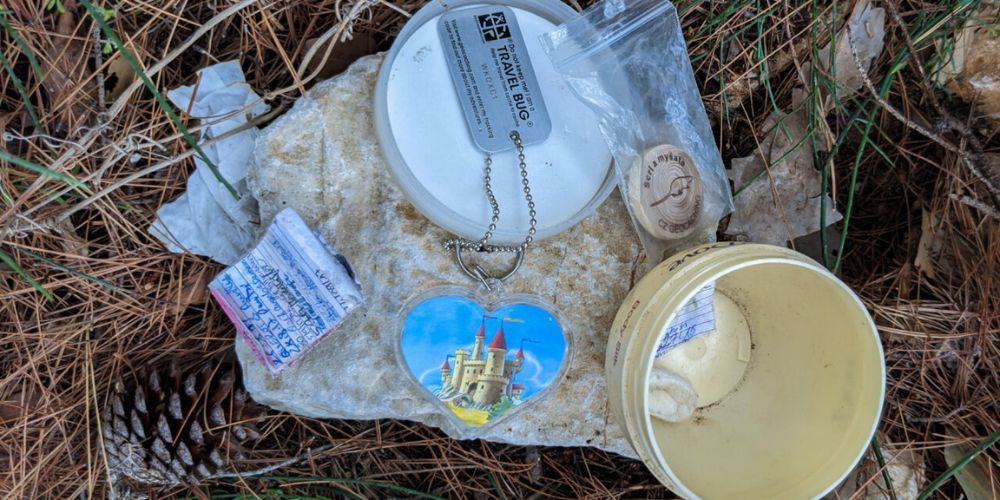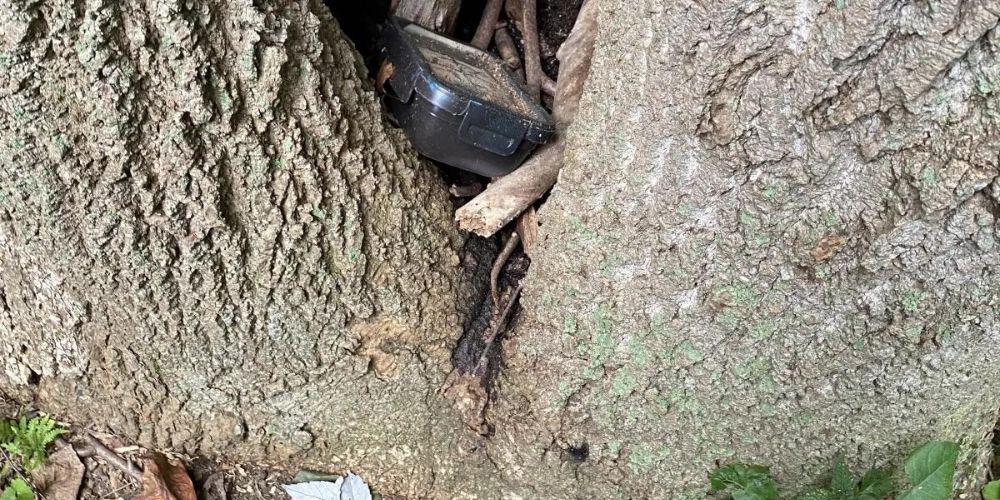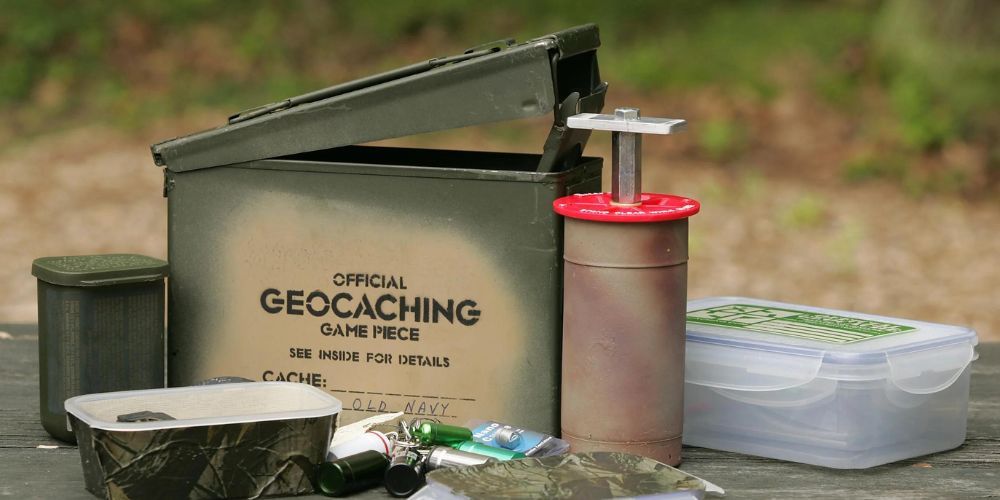Geocaching Containers: The Ultimate Guide to Hiding and Finding Treasures
Geocaching combines the thrill of a treasure hunt with the joy of exploration. But there's nothing more frustrating than discovering a damaged container or one that's too easily found by passersby. For your next adventure, selecting the right container can make all the difference between a memorable find and a forgotten journey.
A great geocaching container should be both durable and discreet, able to withstand harsh weather and blend seamlessly into its surroundings. Imagine holding a sturdy ammo can that feels built to last or examining the tight seal on a plastic box designed to keep its treasures dry. This guide explores various options, diving into traditional choices and unexpected creative ideas. With thorough research and practical advice, we promise every cache you set will bring satisfaction and challenge to fellow geocachers.
The best containers for geocaching vary based on the environment and location. For example, in a forest setting, a durable waterproof container camouflaged as a fallen branch might be ideal. It's essential to consider the size, weatherproofing, and camouflage ability when selecting a geocache container.
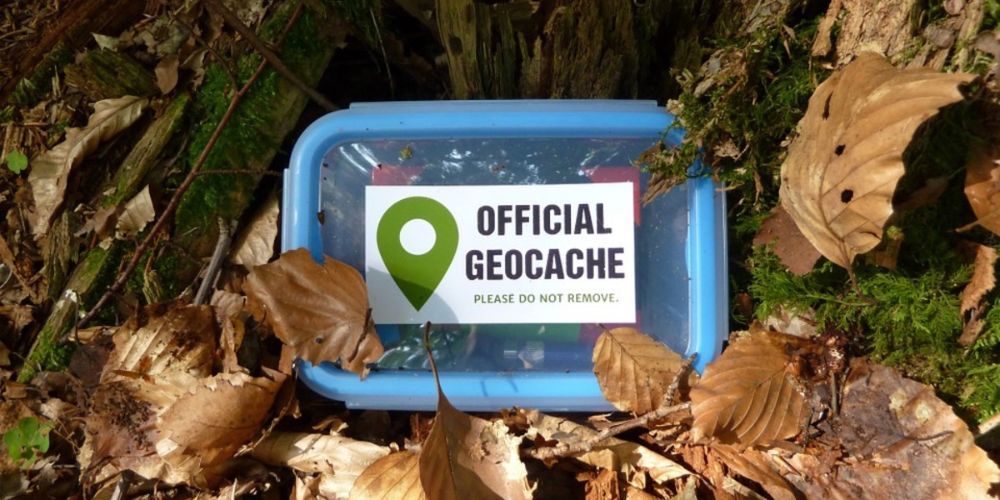
Types of Geocaching Containers
When it comes to geocaching containers, variety is the spice of life. There are several types of containers, each designed with specific features tailored to suit various hiding spots and environmental conditions. Let's explore a few common types:
Traditional Plastic Containers
These are like the workhorse of geocaching containers. They come in different sizes and are easily obtainable. Additionally, many traditional plastic containers are waterproof, making them suitable for most hiding spots, even those exposed to the elements.
Ammo Cans
If you're considering a long-term hide in a rugged environment, ammo cans are the way to go. These containers are highly durable, often waterproof, and provide ample space for storing logbooks, trinkets, and trackable items. Their sturdiness ensures that the contents remain undamaged even in harsh conditions.
Ammo cans inherit their name from their original purpose - to carry ammunition. This strong construction makes them ideal for hiding geocaches in remote locations where the container may be subjected to rough handling or severe weather.
Pill Bottles
Compact and easily camouflaged, pill bottles are frequently used for smaller caches. Their small size makes them perfect for urban environments or tiny hiding spots where larger containers won't fit. However, it's important to note that these containers might not always be completely waterproof, so they're best suited for sheltered areas.
Lock-n-Lock Boxes
These boxes provide a secure seal to keep contents dry and safe from moisture. They come in various sizes, offering flexibility for different hiding places while ensuring that any trade items inside remain protected from the elements.
Understanding the distinct advantages and considerations of each geocaching container type is essential when planning your cache placement. Each type has its own strengths and limitations, so choosing the right one can make a significant difference in preserving the integrity of your cache over time.As we dive deeper into the world of geocaching equipment, let's now turn our attention to exploring the essential features of durable containers that ensure the longevity and security of hidden treasures.
Key Features of Durable Containers
When it comes to geocaching, choosing a container with top-notch durability is an absolute necessity. The last thing you want is for your hard-found treasure to be ruined due to a flimsy or poorly protected container. Here are some key features of durable geocaching containers that will ensure your treasure stays safe and sound.
Waterproof Seals
Water is the natural enemy of any geocache. Look for containers with rubber gaskets or seals that provide waterproof protection. These seals prevent water from seeping into the container and damaging the logbook or any items hidden inside. It's like fitting your cache with an invisible raincoat!
Sturdy Materials
The material of the container is crucial to its durability. Opt for containers made of high-quality plastic, metal, or composite materials that can resist breakage. High-impact plastic and lightweight metals like aluminum are excellent choices because they can endure rugged outdoor environments without getting easily damaged. You want your treasure well-protected from accidental drops and knocks.
UV Resistance
Exposure to sunlight can take a toll on container materials over time, especially plastics, causing them to become brittle and prone to cracking. Therefore, it's important to consider containers with UV protection. This feature helps prevent plastic from becoming brittle and cracking under prolonged sunlight exposure. A UV-resistant container ensures that your geocache can weather the elements without compromising its integrity.
These key features not only shield your geocache against environmental harm but also increase its longevity, making it a reliable hiding spot for many years to come. Now let's explore how these features translate into real-life benefits for both hiders and seekers in the world of geocaching.
With a strong understanding of what makes a durable geocaching container, let's now uncover the creative and unique hiding spots that turn this outdoor activity into an adventure beyond expectation.
Creative and Unique Hiding Spots
When it comes to geocaching, innovative hideouts can transform a simple treasure hunt into a thrilling adventure. Let's explore some out-of-the-box hiding spots that will make your cache unforgettable for those seeking it.
Birdhouses and Mailboxes
Birdhouses and mailboxes have long exuded the charm of rural settings, making them perfect hiding spots for geocaches. With their small, discrete openings and weather-resistant features, they offer an ideal camouflage for caches. Their widespread presence adds a layer of complexity to the hunt and seamlessly blends into the environment while remaining easily accessible to enthusiastic seekers.
Urban Landscape Concealment
In bustling urban environments, geocachers have found creative ways to seamlessly integrate caches into the cityscape. From hollowed-out bolts and screws mounted on railings to magnetic film canisters hidden amongst street signs or light poles, the possibilities are endless. This urban camouflage challenges participants to hone their observation skills and encourages them to discover hidden treasures in busy city settings.
Faux Electrical Outlets
A cleverly disguised cache in the form of a faux electrical outlet can be attached to the exterior of buildings or public spaces. These inconspicuous hideouts present an exciting challenge for geocachers as they navigate through urban landscapes, blending seamlessly with real outlets to test the ingenuity and resourcefulness of those seeking the cache.
Clever Camouflage in Plain Sight
Replicating everyday objects such as sprinkler heads, fence caps, or even discarded plastic bottles can serve as exceptional camouflage for geocache containers. By fitting seamlessly into their surroundings, these inventive hideouts create an air of mystery and intrigue, compelling participants to embrace detailed exploration while simultaneously appreciating the cleverness and creativity behind each disguised cache.
Underwater Caches
For adventurous geocachers exploring coastal areas or lakes, underwater caches provide a thrilling twist to the traditional hunt. Encased in waterproof containers equipped with secure tethering mechanisms, these caches are submerged below the water's surface, requiring snorkeling or diving gear for discovery. The allure of underwater caches introduces an element of excitement and exploration, enthusing participants with the prospect of uncovering hidden treasures in aquatic realms.
By tapping into your creativity and utilizing these unconventional hiding spots, you can elevate the thrill of geocaching by offering seekers a captivating blend of challenge and innovation.
Large vs. Micro Containers
When it comes to geocaching, selecting the right container size is a crucial decision. The container size should be chosen based on the hiding location, the surrounding environment, and the purpose behind the geocache.
Large Containers: These are spacious enough to hold various items such as toys, trinkets, or trackables—game pieces that move from cache to cache, making them suitable for family-friendly caches or areas with ample space that allow room for creative treasure exchanges. Imagine stumbling upon a fairy-tale-like chest nestled in the woods, inviting explorers of all ages to discover its contents.
On the other hand, Micro Containers are compact and ideal for urban settings or crowded locations where discretion is necessary. They typically contain just a logbook and are discreetly concealed to challenge even the most observant geocachers.
The choice between large and micro containers ultimately depends on both the available space at the cache location and your intended audience.
For instance, if you're placing a geocache in a wide forest clearing with ample room, a large container allows for an engaging treasure trove experience, especially for families with children who enjoy exploring nature. On the other hand, if your cache is situated in an urban setting like a bustling city center or within a small park that's often busy with muggles (non-geocachers), a micro container is more practical due to limited opportunities for concealment.
Now that we understand the distinctive features of large and micro containers and their suitability for different environments, let's explore how materials and camouflage play a crucial role in effectively hiding geocaches.
Camouflage Techniques
One of the keys to a successful geocache lies in its ability to seamlessly blend into its surroundings. A well-camouflaged container not only poses an exciting challenge for finders but also protects the cache from being accidentally discovered by non-geocachers, or "muggles." Let's explore some clever techniques to effectively conceal geocache containers :
Natural Materials
Creating convincing camouflage often involves the authenticity of natural materials. By covering the container with leaves, twigs, or dirt, you can help it blend in with the environment. When done thoughtfully, this technique can make the cache virtually invisible to the untrained eye, adding an extra layer of intrigue to the hunt.
A well-camouflaged geocache typically incorporates local vegetation and debris, making it appear as though the container is an organic part of its surroundings. For example, hiding a cache in a forested area might involve using fallen leaves and small branches to mask the container's presence. In contrast, a desert environment might call for a different approach, using sand and rocks to obscure the cache within the arid landscape.
Paint and Tape
Given the diverse settings where geocaches are hidden, using paint or camouflage tape provides a versatile solution for concealing containers in both urban and rural environments. Matching the color and texture of the surroundings helps the cache blend seamlessly into its hiding spot, making it challenging for seekers to spot at first glance.
Urban caches often require a different approach. Utilizing colors found within cityscapes – like gray concrete or metal – helps containers disappear into their surroundings. Additionally, urban geocachers turn to magnetic caches that stick under city structures or incorporate reflective tape for nighttime visibility.
Hide in Plain Sight
Sometimes, the best way to hide something is right out in the open. Placing the container in an expected setting, such as under a park bench or attached to a metal object using magnets, creates an element of surprise and intrigue for those seeking it. This technique relies on psychological camouflage – camouflaging a cache by placing it where people don't expect it to be.
Successfully employing this technique often involves selecting locations that offer strategic advantages. For instance, attaching a magnetic cache underneath a railing or affixing it to a metal gate blends it seamlessly with its surroundings while remaining easily accessible for geocachers.
By mastering these camouflage techniques, geocachers can further enhance the thrill of the hunt while ensuring that their hidden treasures remain safely concealed from unsuspecting passersby.
The art of hiding a well-camouflaged geocache becomes even more intriguing when you consider the essential contents that contribute to its allure. Let's dive further into this exciting aspect of geocaching.
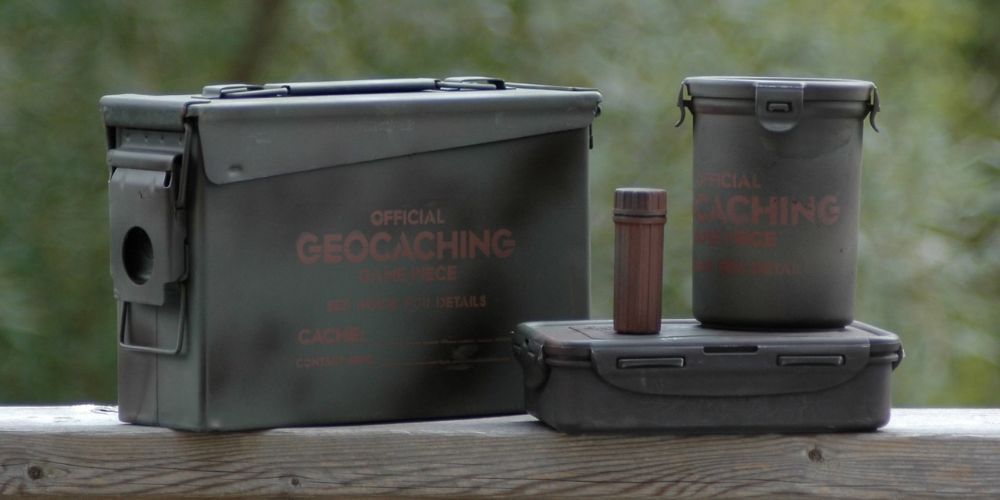
Essential Contents for Geocaches
When a geocache is well-stocked with thoughtful essentials, it can elevate the whole experience for both hiders and finders. Let's go through what goes into a great geocache:
Logbook and Pen
If you ask any geocacher, they'll tell you this is the most important item in any cache. It's like the signature book at a wedding - a record of who was there. Without a logbook , how would people write their names down, claiming they found your treasure? Be sure to have space for people to write their names and the date they found the cache. But remember, this logbook needs to be small enough to fit inside your chosen container.
The pen is an equally important part of this duo. A cache without a pen is like an unfinished story—it just doesn't work. Include something that is reliable and will write in different weather conditions in case someone forgets their own pen. You want to make sure everyone has a chance to leave their mark in the logbook.
Trading Items
Now comes the fun part. Imagine opening a treasure chest and finding an assortment of shiny trinkets! That's what trading items are all about.Here's a tip: Look for small, colorful items that don't break easily, like keychains, toys, or stickers. Make sure they're safe for kids in case little ones come looking too. The goal here is to give people something interesting to discover when they find your cache, and then leave something of equal or greater value in return.
Information Sheet
This might not be on everyone's list, but including some basic instructions and information can elevate your geocache game. Think of it as adding a personal touch to every adventure.In clear writing, provide a brief description of geocaching for newcomers. This way if someone finds your cache and isn't familiar with the activity, they'll get all the information they need to get started. And don't forget to mention your website or social media details where more caches and community info are available.
By taking these additional steps before you hide your cache, you're contributing to not only your enjoyment but also to the ongoing excitement of many other treasure hunters out there. Geocaching is not just about the hiding and finding—it's about creating a shared experience that others will remember long after they've found your cache.
As we venture into the intricate world of maintaining these hidden treasures, let's uncover the essential practices that keep the game alive and thriving.
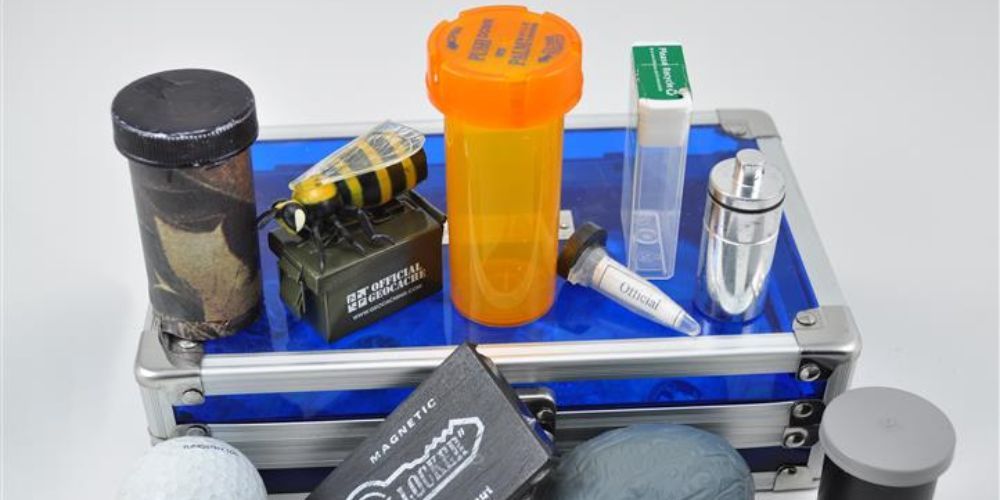
Maintenance and Upkeep
Just like any outdoor items, geocache containers need ongoing care. It's essential to ensure that they remain in good condition for all geocachers who seek them out. So, let's talk about how to maintain your geocache and ensure it continues to provide an exciting experience.
Seasonal Checks
Seasonal changes can impact the condition of your geocache. Rain, snow, and extreme temperatures can cause damage over time. Therefore, conducting seasonal checks is crucial. Make it a point to inspect your geocache regularly, especially after harsh weather conditions. Ensure that it remains dry inside to prevent any potential damage to the logbook or contents. If you notice any damage to the container or its contents, such as cracks, moisture, or wear and tear, replace them promptly to maintain the quality of the cache.
Monitor Online Logs
Geocaching is a community-driven activity, and communication among geocachers plays a significant role in upkeeping caches. Check the logs from finders regularly to stay updated on the condition of your cache. Sometimes, geocachers may report issues such as damaged containers or missing items through their logs. It's important to respond to these maintenance requests promptly. By doing so, you can address any potential problems with your cache and ensure that it provides an enjoyable experience for those seeking it out.
Update Coordinates
Environmental changes can alter the surroundings of your geocache over time, potentially affecting its accuracy. If the container has been moved or if there have been changes in the landscape that impact its location, updating the GPS coordinates on the geocaching website is necessary to maintain accuracy. This step ensures that geocachers can locate the cache reliably and enhances their overall experience.
Regular maintenance and prompt action based on logs from finders are key factors in upkeeping your geocache containers. By conducting seasonal checks, staying updated through online logs, and updating coordinates when necessary, you contribute to maintaining the quality and integrity of the geocaching experience for all participants.
Nature's Playbook
As an Amazon Associate I earn from qualifying purchases.

